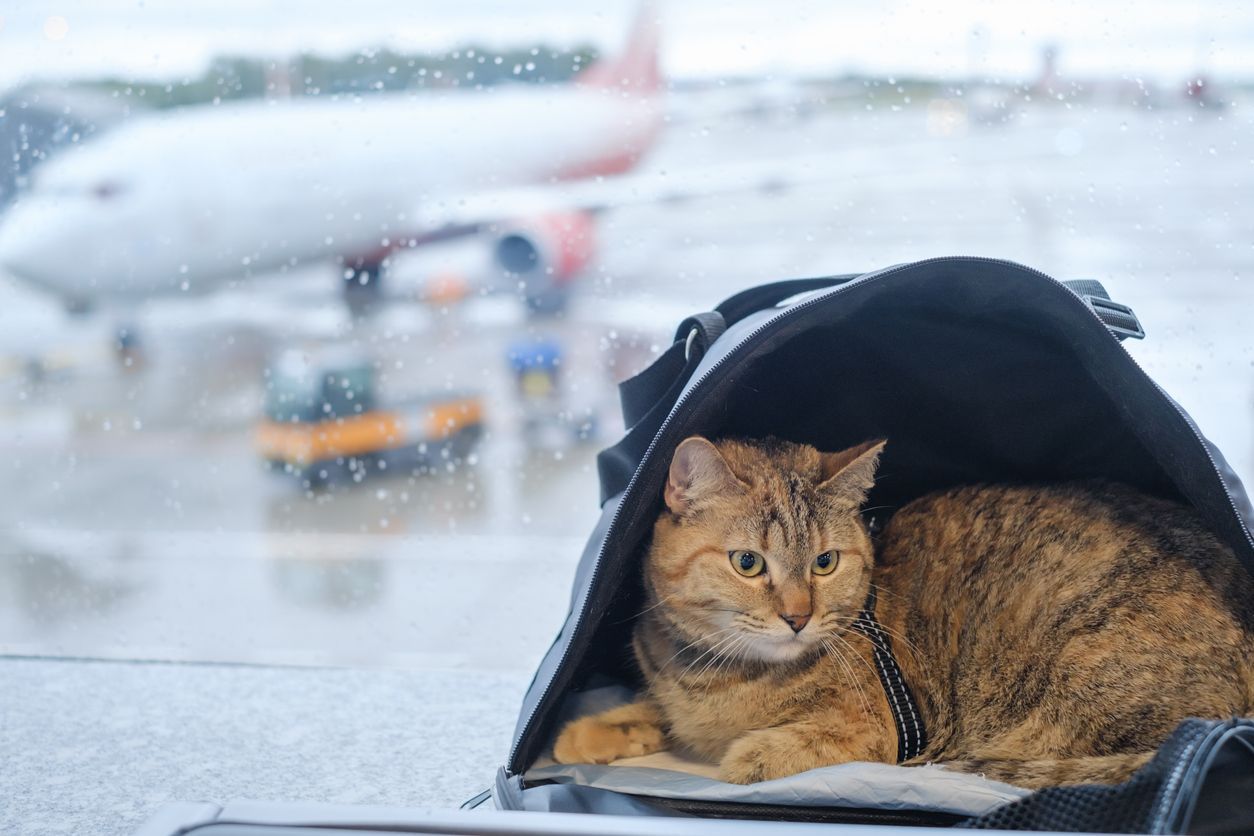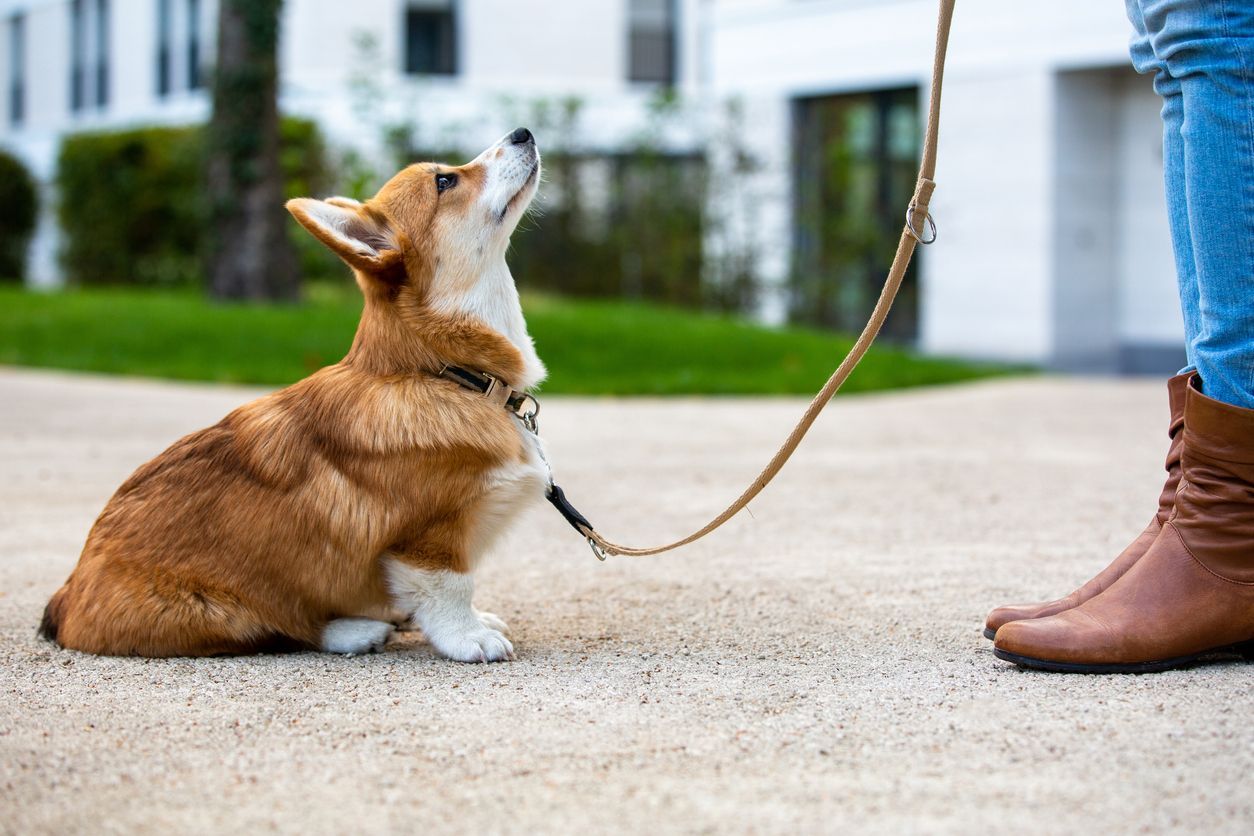How much does traveling with your pet cost?

Anyone who’s traveled by air knows there’s a fair amount of preparation that needs to be done if you want to avoid unpleasant surprises. Add an animal to the equation and you’re looking at a whole new level of responsibility. Read on to learn:
- The available options are for transporting your pet
- What you might need to buy to transport your pet
- Expected costs of essentials as well as the transportation costs
- Essential requirements before your flight
Knowing all the requirements for traveling with your pet can prepare you for any issues along your way, and being aware of how much traveling with your pet costs is an important part of planning your trip.
Why would I need to transport my pet?
Wondering when you might need to transport your pet by air? Although you may not expect to do so very often, there are actually many occasions that may require you to transport your pet across long distances, whether you are accompanying them or not.
Vacation
You may prefer to travel with your pet if you don’t want to leave them behind on lengthier stays away from home, such as a summer abroad. Not only does this mean you can continue to care for your pet, it also means your pet has an opportunity to explore a new place.
Moving
Another reason you may wish to transport your pet is if you are permanently relocating. While this sort of journey often requires land-based travel, pets relocating across very long distances (or across an ocean) need alternate transport.
Rescue
You may have fallen for an animal while abroad, or seen one online in need of a loving home. If you’re rescuing an animal through a charity, they may fund a portion of the transport costs, but this is not always the case, so be sure to read all the fine print.
A new puppy
Sometimes your heart is set on a particular breed or type of animal that may not live close by. This is especially true for less-popular breeds, where reputable breeders are few and far between. In some instances, the breeder will arrange for the pet to be shipped to you and include those additional costs in the total price tag.
Breeding
Some very valuable dogs may travel for reproductive purposes. Of course, with the invention of artificial insemination and the use of frozen semen, this is becoming much less common. Rather than the dog traveling, sperm can be shipped to impregnate the female — which is far more economical.
Carrier options and costs
When transporting your pet, it is important to put them inside an appropriate carrier to ensure they are safe, contained, and comfortable. Freight companies and airlines have a list of specifications for approved animal carriers, so always check ahead before making a purchase since the wrong carrier can mean your pet is denied boarding.
Hard-sided carriers
Most airlines require a hard-sided carrier that is made from plastic or metal. These carriers must have at least one side that is a metal-grate door. The price of these carriers varies significantly depending on size, so be sure to shop around for a good bargain or sale.
Price: USD $25 to USD $350
Wire crates
Many pet parents already own wire crates because they’re easy to clean and provide great ventilation when crate training. While these crates are generally sufficient for traveling by ground, they are typically not accepted by airlines.
Price: USD $30 to USD $120
Wire crates with wheels
These containers are effective for transporting your pet around airports and train stations. Naturally, to avoid moving about during travel, the wheels need to be lockable. Better yet, remove the wheels entirely, if possible, as not all travel companies include carriers with wheels in their list of approved equipment.
Price: USD $90 to USD $130 (wheels can be purchased separately for USD $5 to USD $50)
Soft or foldable carriers
These are ideal for smaller pets that are allowed in the cabin of a plane. Hard kennels are generally not allowed inside the aircraft, so soft carriers are essential when the pet is in the cabin. Keep in mind that the carrier needs to fit under the seat to comply with air travel regulations. Check the airline’s policies to find the approved dimensions before you buy.
Price: USD $20 to USD $70
Slings and backpacks
If you need to keep your hands free while traveling with a small dog or cat, slings and backpacks can be useful. But remember they can’t be used while an animal is in cargo and are better suited for walking around the airport or traveling to another location.
Price: USD $15 to USD $60
International travel costs
Once you’ve got your carrier selected, be ready to face a steeper expense — the cost of the animal’s “ticket.”
Travel fare for animals varies widely depending on the carrier and length of the trip. When flying, it is cheaper to bring the pet in the cabin with you, but this is only an option for small dogs and cats and isn’t always possible on international or long-haul flights.
As an example of price variation, here are a few costs from well-known, international airlines:
British Airways charge pet owners from USD $1,003-USD $4,390 for transporting a dog or USD $1,066-USD $1,487 for transporting a cat in cargo. The price varies depending on the size of the carrier, as well as on the flight itinerary, and they do not allow pets within the cabin of the plane.
In contrast, Air France charges between USD $75-USD $215 in the cabin and up to USD $107-USD $430 in the hold.
Pre-travel checklist and costs involved
When traveling, especially internationally, there are boxes to tick and costs to consider.
A convenient way to prepare is by booking a virtual vet appointment. You and a qualified professional can discuss if your pet is a good candidate for long-distance travel, carrier options, and how to best reduce your pet’s stress when flying.
Microchips
Microchips ensure your pet can be identified and linked back to you and your contact details. Most dogs and cats are chipped in their first months of life and the cost is only USD $20-USD $50.
Pet passports and travel certificates
If needed, paperwork for transporting a pet internationally must be sorted out well ahead of time. It’s wise to contact the appropriate regulating body, as requirements vary depending on where the pet is traveling to and from. For these travel documents, you will likely pay USD $100-USD $250.
Wormers
Many countries require your pet to be up to date with parasite prevention before entering. This is inexpensive and it’s best to keep on top of parasite control regardless of if your pet is traveling or not. A dose of dewormer designed to protect against multiple types of parasites costs USD $5-USD $10, depending on the size of the pet.
Rabies vaccine
Most dogs live in countries (such as the United States) that require up-to-date rabies vaccination for all pets. This vaccine is on the cheaper end of the spectrum, costing around USD $25, and is usually administered every 3 years. When traveling, some countries request proof of vaccination, which may include a blood test to confirm the vaccine is working. These blood tests cost about USD $100.
Pre-travel checks
Most airlines require that a traveling pet is examined by a veterinarian within a set window of time before travel (i.e., 24 hours before boarding) to ensure that a sick pet doesn’t cross-contaminate other animal passengers. Pre-travel checkups generally have a similar cost to routine consults (USD $40-USD $60) and the vet provides written proof of the check-up.
Last but not least, make sure you know which airlines offer in-cabin accommodations to avoid surprises closer to your travel date.
How to keep travel costs down
There’s no denying that traveling with an animal can be costly, but there are some things that you can do to keep overall price down.
Compare airline ticket fees
Much like you do with your own travel costs, it’s economical to shop around and to use comparison websites when transporting pets.
Determine if your pet is allowed in the cabin
If an animal can travel within the cabin, it is significantly cheaper than shipping them in cargo. However, this isn’t an option for larger dogs or for all routes, so be sure to check beforehand.
Invest in a crate that will last your pet’s life
A good crate or carrier isn’t just useful on the day of transport. Rather than spending hundreds of dollars on something that’s used once and then put into storage, consider using the carrier as your household crate (if suitable for your pet).
Do your homework
You can best avoid quarantine for your pet by ensuring all regulatory rules are strictly followed. If you don’t, you run the risk of the animal being denied entry, returned to the country of origin, or put into quarantine — all at the expense of the owner.
Consider alternative options
While a plane is often the quickest means of transport, it may be more cost effective to ship a pet by land via car or truck. Many companies offer shipping services for things like furniture and luggage, and also have special climate-controlled trucks for transporting pets.
Take home message
Don’t let the final price tag of flying with a furry friend give you premature jetlag. If you’ve already put money into the routine costs of owning a pet (such as microchipping, vaccines, and parasite prevention), you won’t need to do that again. Finding cost-effective airfare may require the detective skills of a bloodhound, but once you’ve got the paperwork and tickets sorted, the only thing left will be packing a few pet essentials for a stress-free flight.






